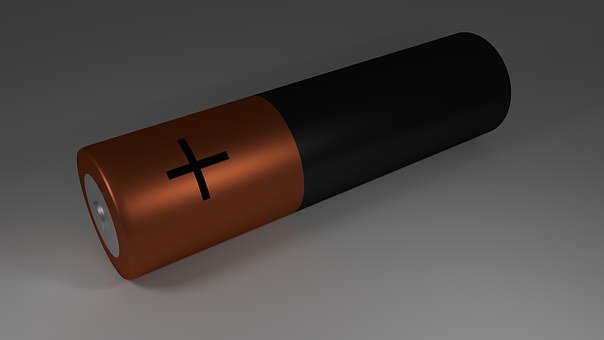One day when you wake up to find that your car battery is dead or malfunctioning, it becomes a terrible day for you as you have to change it before going to work.
But do you know that battery size differs? Do you know that the performance of your car depends on the right size battery?
Yes! There are different sizes for different car batteries. You have to pick the right size to get the best performance. Otherwise, the car may not start or show problems with all the electric devices. Hence, the car battery size matters.
Let’s learn all about the battery sizes here in this article below.
Does Group Size on Batteries Matter?
Most people are unaware that vehicle batteries are not identical and there are a variety of battery types to select from, like dry charged or maintenance-free, as well as various sizes.
Size is critical when it concerns buying automotive batteries. The size of the automobile battery has a significant impact on your vehicle’s operation.
A modest two-door automobile is not the same as a massive work truck, and each takes a different degree of power to crank the engine.
Your car will start and run efficiently if you have the right battery. Otherwise, you will face many difficulties.
Again, when you insert a battery that is too tiny, your vehicle will not obtain the required energy to run, and you will be back at square one.
Not only does size affect the performance of your vehicle, but also buying a battery that is too small or too big and therefore does not correctly fit the battery portion in your car may cause a plethora of issues.
When the battery is not properly installed, your automobile is in danger of scratching the metal hood, possibly resulting in short circuits, sparks, and even automobile fires.
So be cautious. Before visiting an automotive retailer, consult your vehicle’s owner’s handbook to discover the size of your battery group.
Can I Put a Different Group-Size Battery in My Car?
If you swap a car’s battery with something different than what the manufacturer recommends, you risk harming the electronics, the starter, or other devices. However, it may run as usual too. There are some considerations to make.
Before everything else, examine if the battery can fit safely and securely within the car’s battery box.
Unless it’s physically too big, don’t worry about starting the car. But if it doesn’t fit right, you can’t drive it around anyway.
Keep in mind that the battery should be securely fastened so that it would not jiggle or bounce while driving!
In case you want a smaller battery, it is also dangerous. Even though it is smaller in actual size than your present battery, you must also ensure that it can be adequately protected.
You must also ensure that the new battery is not so high that the cover makes a connection with the battery terminals when closed. This might cause a severe problem in your battery, resulting in a fire or explosion.
What Happens if You Put the Wrong Size Battery in Your Car?
When you put the wrong size battery in your car it would definitely show lots of anomalies and may cause you various kinds of trouble including the dangerous ones.
When the Battery is Smaller:
Using a smaller battery in the automobile can, of course, cause trouble starting. Batteries are classified according to their average lifespan and CCAs (cold cranking amps).
The CCA of a battery describes its capacity to start the engine in cold weather.
Consider attempting to start a huge V-8 engine on a chilly morning with a battery built for a little four-cylinder car.
Furthermore, a little battery will not have enough capacity to operate your car’s electronics, particularly if your vehicle is switched off. Even listening to the radio for a long time will drain your battery.
Frequent short excursions put a strain on practically every type of battery, but tiny cells suffer the most.
When you run errands the whole day, often starting the car and driving small distances, the battery will not have an opportunity to completely recharge.
Rather than bearing a portion of the load, the battery is constantly drawing a charge. This might lead the alternator to overheat.
When the Battery is Bigger:
When you have a battery that is bigger than whatever the manufacturer prescribes might cause several issues. To begin with, if you purchase the battery from a big box retailer, for instance, you may discover that it will not fit in the car’s battery box.
Car batteries exist in a variety of sizes, and also top-mount and side-mount layouts, in addition to power and CCA ratings.
Furthermore, even if it fits in the container, a big battery may create additional complications.
Manufacturers properly tailor their alternators and batteries to the power demands of the vehicle. A faulty battery/alternator combination may lead the alternator to overheat and limit its life.
Consider fitting a battery built for a huge luxury six-cylinder SUV with a plethora of gadgets into a modest, entry-level four-cylinder car.
Will a Car Start With the Wrong Battery?
Although it is possible to start a car with the wrong sized battery, you cannot use it on the road. You cannot run the car if the battery doesn’t give you enough cranking power.
And when you have a different sized battery, it will not fit and can cause damage to your car.
Due to the risk of endangering your car and you, you should put the right battery in it.
How to Choose the Right Battery Size?
Car batteries are all categorized into groups based on their size. It specifies the battery case dimensions and also the direction of the battery terminals.
To locate the correct battery for your vehicle, you must first determine the group size.
Step 1: Look at the old battery’s group size. If the car has always had the original battery, search for the group size on a tag on the battery.
The label might be located on the case’s top or side. Group sizes are usually two digits that are followed by a letter.
70, 74, 75, and 78 are common side-post battery group size numbers. 41, 42, 48, 24, 24F, 51, 58R, and 65 are typical top-post battery group size numbers.
Step 2: Look up the group size in your owner’s handbook. In the owner’s handbook, look under the specs section.
The battery group size, and other important battery details, will be included in the specifications.
Step 3: Look up the group size online. To establish the size of the car’s battery group, use an internet site.
Conclusion
It’s pointless to worry about getting the correct automobile battery sizes.
Instead, make use of the facts you already have. Read your vehicle’s owner’s handbook. Examine your existing battery for finding the right battery size.
Your car’s battery will inevitably collapse. The truth is, one of the most common car maintenances for car users is battery replacement.
When the time comes to change the battery, make it as simple as possible for yourself. When you go into an automotive store, look up the battery group size and remember the model of your car as you explore.
Related Posts:

